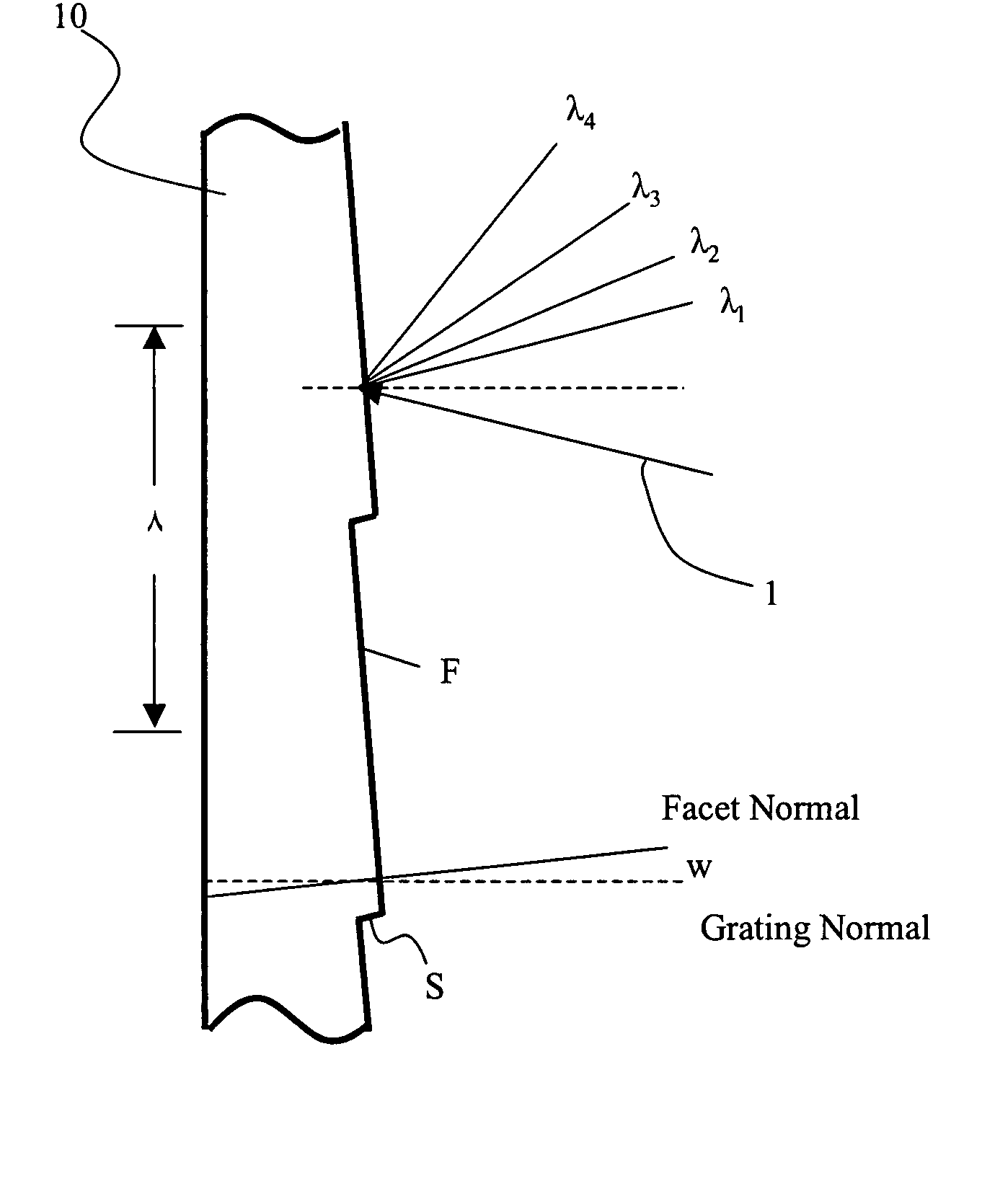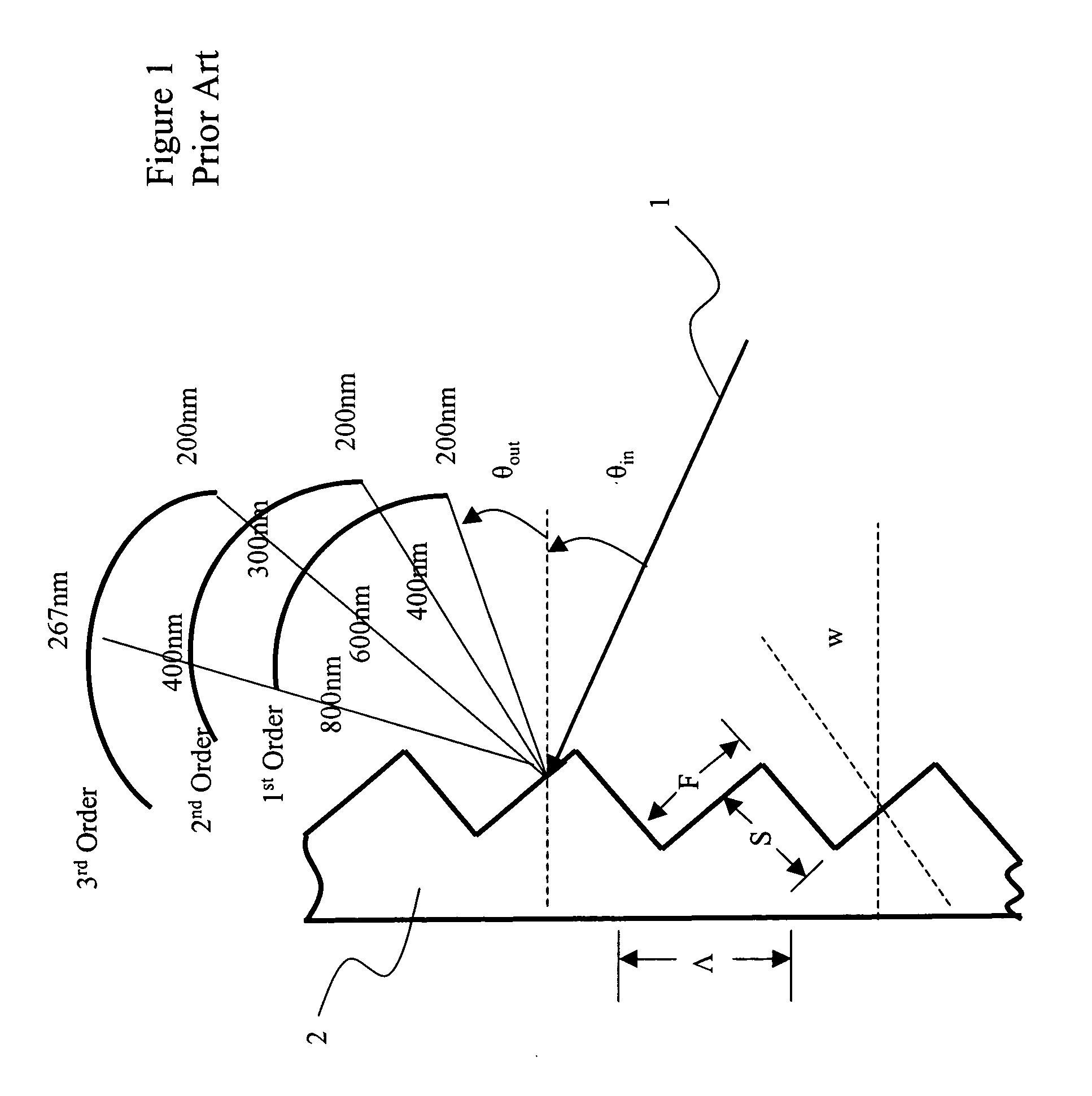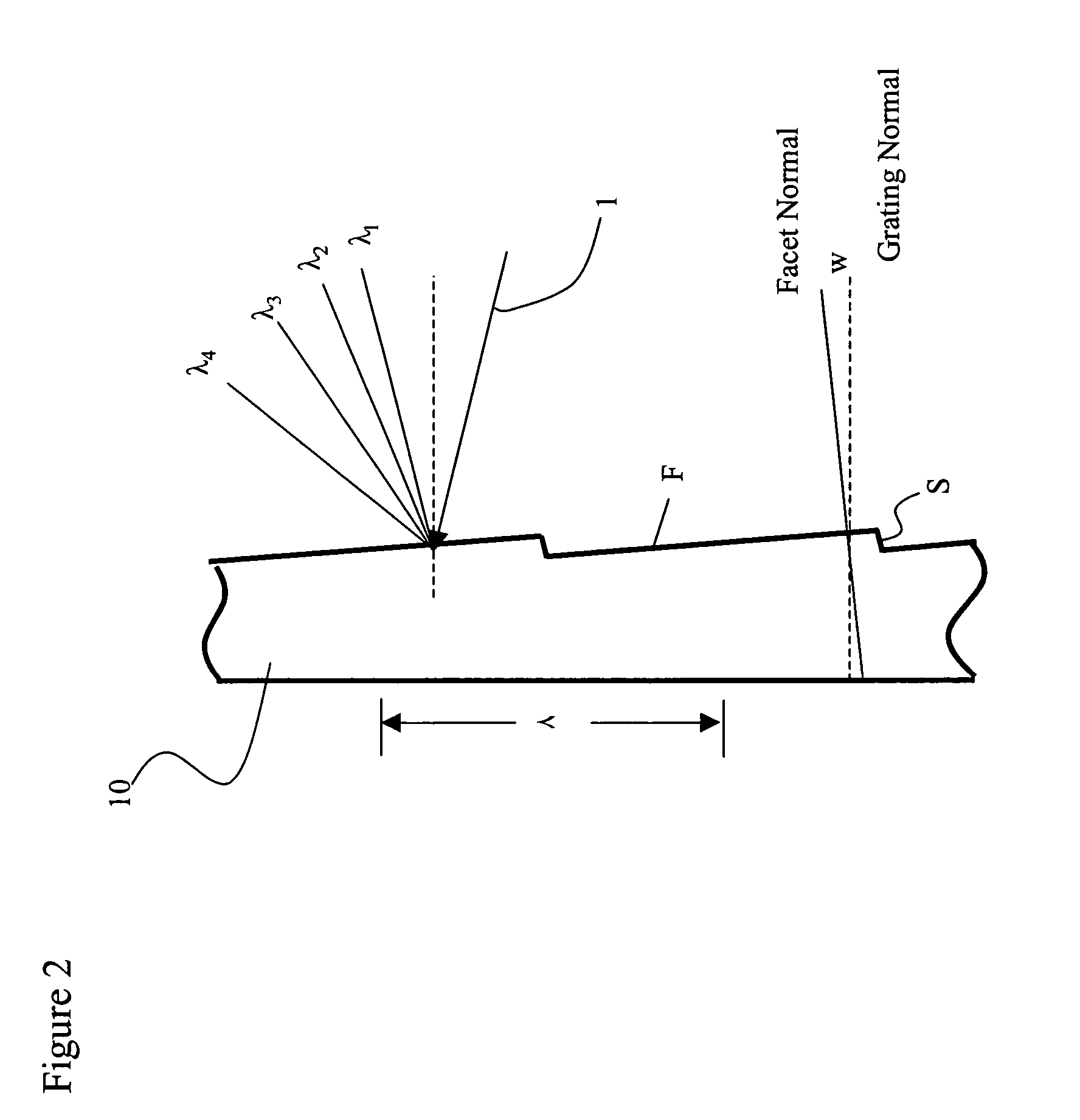Planar waveguide reflective diffraction grating
a reflective diffraction and waveguide technology, applied in the direction of optical multiplex, electrical apparatus, instruments, etc., can solve the problems of large phase difference between interfering paths, the incident beam is not in the direction, and the existing devices are limited to operation over small wavelength ranges
- Summary
- Abstract
- Description
- Claims
- Application Information
AI Technical Summary
Problems solved by technology
Method used
Image
Examples
Embodiment Construction
[0045]One of the major concerns in the design of planar waveguide diffraction gratings is the manufacturability of the reflecting and sidewall facets F and S, respectively. Furthermore, a major limit to the manufacturability of the facets heretofore, has been the photolithographic resolution limitations. Typical photolithographic procedures are limited to resolutions in the range of 0.5 to 1.0 μm, so the minimal requirement to achieve reasonable performance from a grating is that the reflecting facet size F must be larger than this resolution, say 2.5 to 5 μm or more in size.
[0046]In FIG. 1, the light path is simplified by the assumption that the input and output angles θin and θNout, respectively are identical. This assumption is only to simplify the mathematical treatment of the facet geometry. Accordingly:
F≈Λ cos θin; and (6)
[0047]Equation (1) simplifies to
mλ≈2Λ sin θin (7)
[0048]Combining equations 6 and 7 yields
[0049]F≈mλ2tanθin(8)
[0050]From FIG. 1:
[0051]SF≈tanθin(9)
[0...
PUM
 Login to View More
Login to View More Abstract
Description
Claims
Application Information
 Login to View More
Login to View More - R&D
- Intellectual Property
- Life Sciences
- Materials
- Tech Scout
- Unparalleled Data Quality
- Higher Quality Content
- 60% Fewer Hallucinations
Browse by: Latest US Patents, China's latest patents, Technical Efficacy Thesaurus, Application Domain, Technology Topic, Popular Technical Reports.
© 2025 PatSnap. All rights reserved.Legal|Privacy policy|Modern Slavery Act Transparency Statement|Sitemap|About US| Contact US: help@patsnap.com



